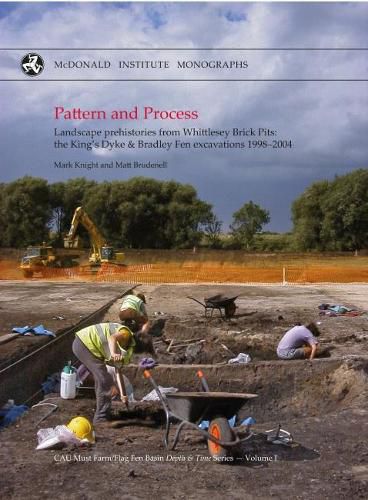Readings Newsletter
Become a Readings Member to make your shopping experience even easier.
Sign in or sign up for free!
You’re not far away from qualifying for FREE standard shipping within Australia
You’ve qualified for FREE standard shipping within Australia
The cart is loading…






The King’s Dyke and Bradley Fen excavations occurred within the brick pits of the Fenland town of Whittlesey, Cambridgeshire. The investigations straddled the south-eastern contours of the Flag Fen Basin, a small peat-filled embayment located between Peterborough and the western limits of Whittlesey ‘island’. Renowned principally for its Bronze Age discoveries at sites such as Fengate and Flag Fen, the Flag Fen Basin also marked the point where the prehistoric River Nene debouched into the greater Fenland Basin. A henge, two round barrows, an early fieldsystem, metalwork deposition and patterns of sustained settlement along with metalworking evidence helped produce a plan similar in its configuration to that revealed at Fengate. In addition, unambiguous evidence of earlier second millennium BC settlement was identified together with large watering holes and the first burnt stone mounds to be found along Fenland’s western edge.
Genuine settlement structures included three of Early Bronze Age date, one Late Bronze Age, ten Early Iron Age and three Middle Iron Age. Later Bronze Age metalwork, including single spears and a weapon hoard, was deposited in indirect association with the earlier land divisions and consistently within ground that was becoming increasingly wet.
The large-scale exposure of the base of the Flag Fen Basin at Bradley Fen revealed a beneath-the-peat or pre-basin landscape related to the buried floodplain of an early River Nene. Above all, the revelation of sub-fen occupation means we can now situate the Flag Fen Basin in time as well as space.
$9.00 standard shipping within Australia
FREE standard shipping within Australia for orders over $100.00
Express & International shipping calculated at checkout
The King’s Dyke and Bradley Fen excavations occurred within the brick pits of the Fenland town of Whittlesey, Cambridgeshire. The investigations straddled the south-eastern contours of the Flag Fen Basin, a small peat-filled embayment located between Peterborough and the western limits of Whittlesey ‘island’. Renowned principally for its Bronze Age discoveries at sites such as Fengate and Flag Fen, the Flag Fen Basin also marked the point where the prehistoric River Nene debouched into the greater Fenland Basin. A henge, two round barrows, an early fieldsystem, metalwork deposition and patterns of sustained settlement along with metalworking evidence helped produce a plan similar in its configuration to that revealed at Fengate. In addition, unambiguous evidence of earlier second millennium BC settlement was identified together with large watering holes and the first burnt stone mounds to be found along Fenland’s western edge.
Genuine settlement structures included three of Early Bronze Age date, one Late Bronze Age, ten Early Iron Age and three Middle Iron Age. Later Bronze Age metalwork, including single spears and a weapon hoard, was deposited in indirect association with the earlier land divisions and consistently within ground that was becoming increasingly wet.
The large-scale exposure of the base of the Flag Fen Basin at Bradley Fen revealed a beneath-the-peat or pre-basin landscape related to the buried floodplain of an early River Nene. Above all, the revelation of sub-fen occupation means we can now situate the Flag Fen Basin in time as well as space.